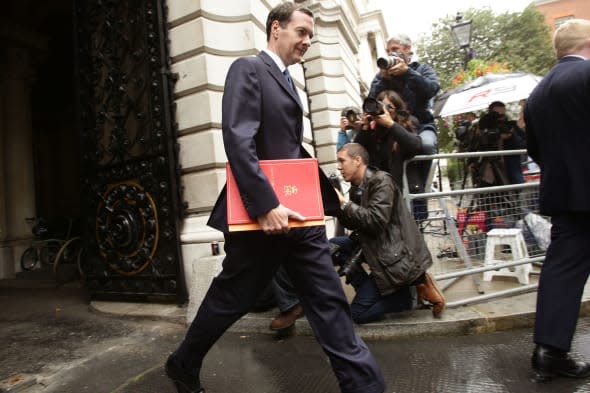New pension rules: how your retirement will be affected

Should you celebrate George Osborne's March Budget "pension revolution"? What do the changes mean practically, especially for those nearing retirement? How might you be affected on the tax front?
And with the prospect of rising interest rates, will annuity rates - at historic lows currently - also rise, boosting your income?
There's a whole raft of changes and timelines to anticipate - as well as new opportunities to make your money work harder for you.
Let's start with some pension nuts and bolts first.
What's changed?
First, Osborne's changes are a genuinely big deal. From next April, it's estimated more than 300,000 people - those hitting 55 - could cash in their pension savings completely. You would have to watch your tax liabilities carefully (and if you spend it all too soon you might be left with just the state pension - so don't blow it).
But the bottom line is that don't have to have an annuity if you don't want one. Such changes may benefit the Chancellor, as he could now get his mits on your money rather earlier. The changes though may also mean that your assets could tip over the £325,000 threshold.
These changes may puts some demands on your timing skills - tricky because few people know just how long they're likely to live. (However, the changes, arguably are good for those with limited life expectancy, allowing them to leave more of their cash to a partner before they die.)
Instantly calculate your pension income options
Fewer (and more) limits
Previously if you took 25% out of your fund as a tax-free lump sum, you had six months to decide what you would do with the rest of your pension. That's now changed - there's no time limit and you can leave your pension in its pot for as long as you want, hopefully still accumulating, thanks to the magic of compound interest.
Free pensions guidance will be offered free through agencies like the Money Advice Service and The Pensions Advisory Service but the advice will come in a range of wrappers, via the 'phone, face-to-face, or the internet.
Currently the minimum age you can take your pension is 55 (though this lifts 57 by 2028).
Annuity options
One option could be to set up a series of annuities over time. You can still can take up to 25% tax-free cash at each phase, plus taxable income from that phase.
"This option is also very flexible," says Which?, "as you can shape each phase around your needs at that time – for example, if you develop a health condition, you can buy an enhanced annuity later on."
Phased retirement also allows any pension that hasn't been used up to be returned to beneficiaries without any inheritance tax or death benefits charges Which? says. "However, you may not achieve the same level of income that you would have got from a conventional annuity."
Draw it down
For better off pensioners another big change is income drawdown, usually only targeted at people with larger pension pot (£200,000 plus). Drawdown lets you keep your pension pot invested in the stock market but drip-feeding income from it.
The minimum of guaranteed pension income from other sources for flexible drawdown, allowing you to take as much as you want each year, has been slashed to £12,000 from £20,000. This threshold will be abolished completely by next April.
However bear in mind that income drawdown can be fiendishly complicated, not to say expensive with many advisers or middlemen taking their cut along the way, depending on how sophisticated or simple your new arrangements are.
Instantly calculate your pension income options
Tax trapthreat
Do watch your new pension tax liabilities. Figures from brokers Hargreaves Lansdown claim that someone with a £100,000 pension pot would pay £34,500 in charges if they tax their whole pension pot on retirement, depending on their tax position.
The risk is particularly acute for anyone who has been a lower rate taxpayer for their working lives, then find themselves catapulted into the higher rate tax bracket on account of their new-found - but finite - pensions funds, classified as 'income'.
You might want to consider transferring older pension pots from previous jobs into the Government's National Employment Savings Trust (NEST) which has much lower charges than the schemes of big insurance players, partly because it's invested in low-cost trackers.
A move that could save you significant pension cash, long-term.
Tough decisions
Remember that whatever option you take, there are no easy answers. Pension options that were once more or less decided by the Government or an insurance company are now increasingly being directed towards individuals.
It means more pressure and emphasis on planning. A blend of options or routes may suit many. But that means some hard saving at a time when real wages remain under pressure.
Longer term, it's also impossible to know whether annuity rates will rise meaningfully, even when interest rates do start to climb (very likely within 12 months).
Bear in mind that all UK residents under age 75 get at least 20% tax relief on pension contributions of up to 100% of their earnings. Higher earners can receive up to 45% tax relief: so the more tax you pay, the more tax relief you're entitled to.
Read more:
Is auto-enrolment doomed to fail?
One in five Brits work in retirement
Would you rather work longer or save longer?



